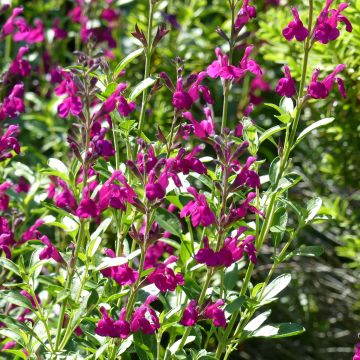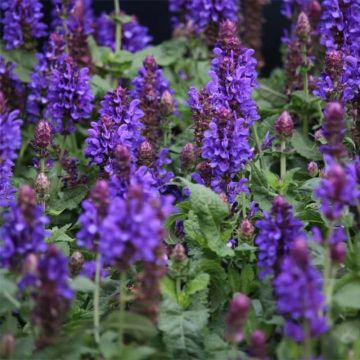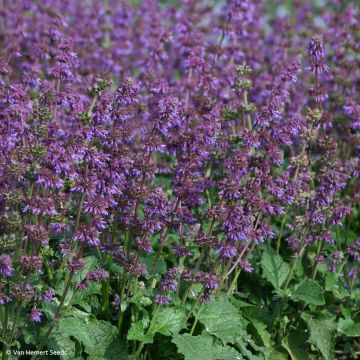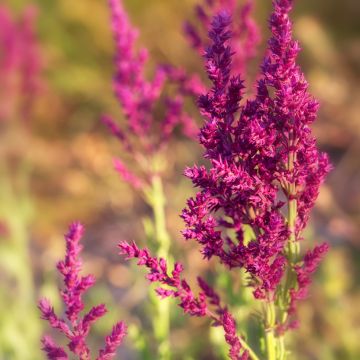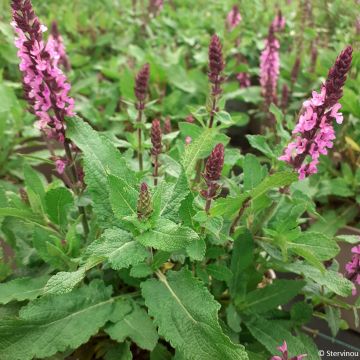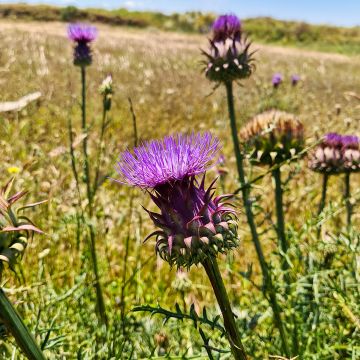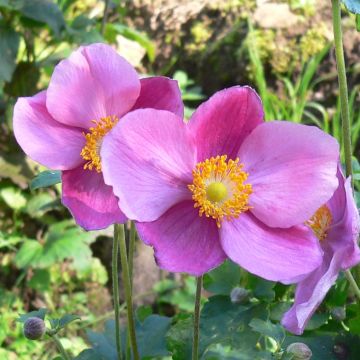

Salvia glutinosa
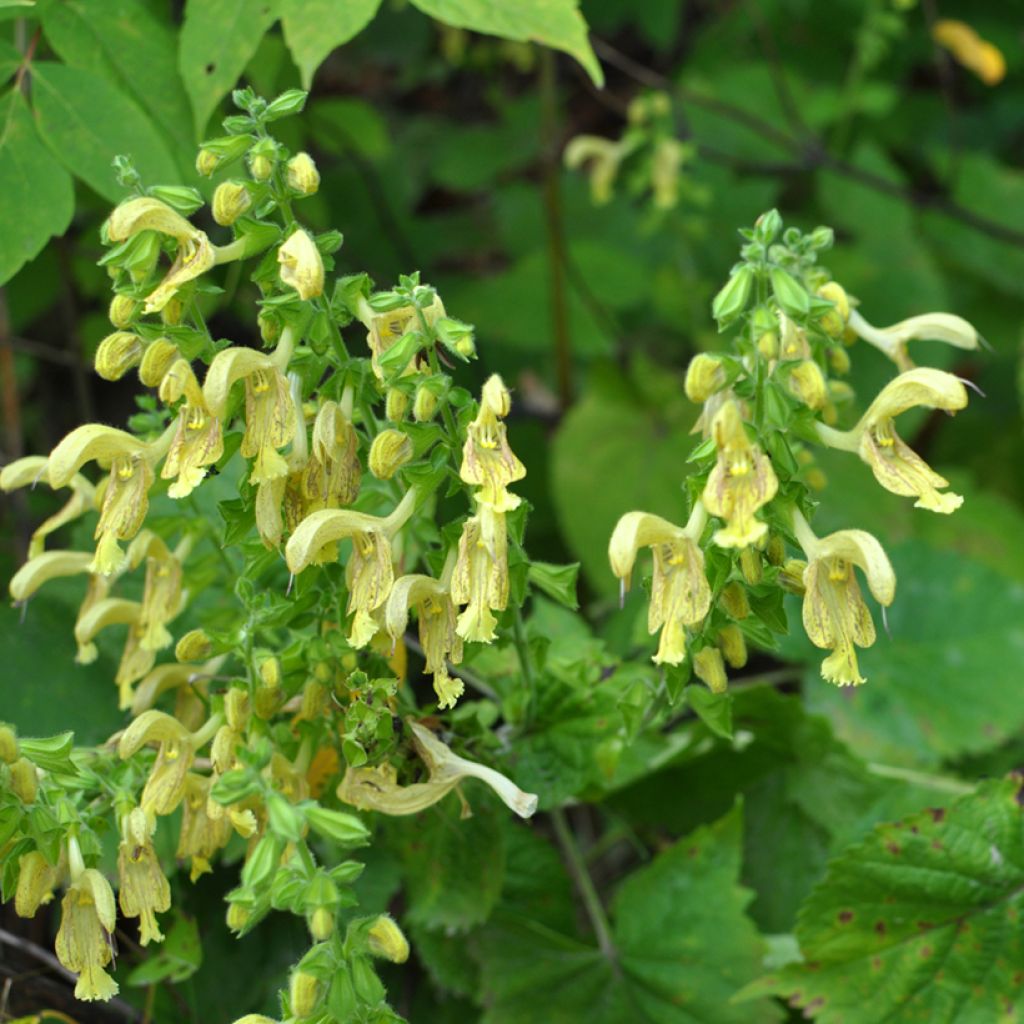

Salvia glutinosa


Salvia glutinosa


Salvia glutinosa


Salvia glutinosa
Salvia glutinosa
Salvia glutinosa
Sticky Clary, Sticky Sage, Yellow-flowered hardy sage, Jupiter's Distaff
In partial shade and in a moist area, in heavy soil, this beautiful sage has become gigantic, it spreads by layering.
Sophie, 30/08/2022
This item cannot be shipped to the selected country
Delivery charge from €5.90
Delivery to Corse prohibited
More information
Schedule delivery date,
and select date in basket
This plant carries a 12 months recovery warranty
More information
We guarantee the quality of our plants for a full growing cycle, and will replace at our expense any plant that fails to recover under normal climatic and planting conditions.
From €5.90 for pickup delivery and €6.90 for home delivery
Express home delivery from €8.90.
Delivery to Corse prohibited: UE law prohibits the import of this plant from mainland France to Corse as part of the fight against Xylella fastidiosa. Please accept our sincere apologies.
More information
Does this plant fit my garden?
Set up your Plantfit profile →
Description
Salvia glutinosa, also known as sticky sage, is a large herbaceous perennial that forms an upright and ramified bush with entirely sticky and aromatic vegetation. In summer, it displays branched inflorescences composed of pale-yellow flowers with a brown streaked heart. It is a wild-spirited mountain plant that is very adaptable and will easily thrive in cool areas, creating bright spots in slightly shaded areas of the garden.
Salvia glutinosa belongs to the Lamiaceae family. Native to Eastern Europe, it is found growing in undergrowth, at high altitudes, often in shade, and in limestone soils. Its species name refers to the sticky and adhesive nature of the entire plant. It is an herbaceous perennial plant that reaches about 1m (3ft) in height and 50cm (20in) in diameter, with a bushy and ramified habit. Flowering occurs in July-August, in the form of branched inflorescences, each bearing 2 to 6 well-spaced pale-yellow flowers streaked with brown on the inside. They measure 3 to 4cm (1 to 2in) in length, which is a beautiful size for a sage flower. The floral stem is covered with sticky glandular hairs, which sometimes trap small insects. The leaves are deltoid, deciduous, toothed, pointed, hairy and glandular, and are also quite sticky to the touch. As soon as the first frost arrives, the foliage dies down and the plant develops dormant buds, waiting for spring. It is a long-lasting plant that easily self-seeds in light soil.
At first glance, Salvia glutinosa is not a showy plant with bold effects. It is a flower with subtle and wild charm that will thrive in the gentle shade of undergrowth or on the edge of shrub bushes. Its presence, however, is highly appreciated in slightly wild areas or near water sources, as it easily colonises space without maintenance. To imitate nature, it can be planted with hostas (Hosta 'Fortunei Aureomarginata'), Japanese kerria (Kerria japonica 'Pleniflora'), ferns (Dryopteris affinis), foxgloves (Digitalis mertonensis), foamflowers (Tiarella cordifolia, T. Ninja), and Japanese anemones for colour. Along its borders, saginas (Sagina subulata, S. subulata 'Aurea') can be planted.
Report an error about the product description
Salvia glutinosa in pictures
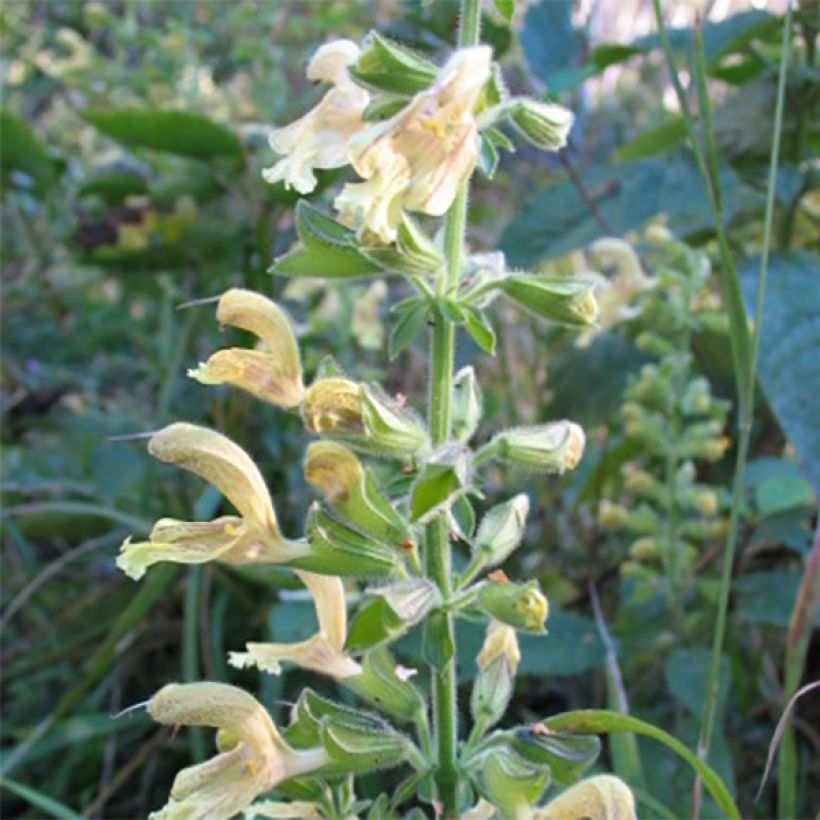





Flowering
Foliage
Plant habit
Botanical data
Salvia
glutinosa
Lamiaceae
Sticky Clary, Sticky Sage, Yellow-flowered hardy sage, Jupiter's Distaff
Eastern Europe
Other Salvia - Sage
Planting and care
Salvia glutinosa can be planted from October to March, outside of frost periods, with a spacing of 40cm (16in) in moist but well-drained soil, sheltered from cold winds and preferably placed in partial shade. This relatively unknown sage adapts easily to all substrates and exposures. In winter, apply a light compost of manure or other organic matter. Prune it back to 30cm (12in) from the ground after flowering. Beware of gastropods that can attack young shoots. In cool and humid areas, use a 4 to 6cm (2in) thick mineral mulch (gravel, pumice, pebbles) to drain the plant's collar. Under these conditions, it is very hardy. If the environment is favourable, it will colonise the planting area and can become invasive.
Planting period
Intended location
Care
-
, onOrder confirmed
Reply from on Promesse de fleurs
Summer flowering perennials
Haven't found what you were looking for?
Hardiness is the lowest winter temperature a plant can endure without suffering serious damage or even dying. However, hardiness is affected by location (a sheltered area, such as a patio), protection (winter cover) and soil type (hardiness is improved by well-drained soil).

Photo Sharing Terms & Conditions
In order to encourage gardeners to interact and share their experiences, Promesse de fleurs offers various media enabling content to be uploaded onto its Site - in particular via the ‘Photo sharing’ module.
The User agrees to refrain from:
- Posting any content that is illegal, prejudicial, insulting, racist, inciteful to hatred, revisionist, contrary to public decency, that infringes on privacy or on the privacy rights of third parties, in particular the publicity rights of persons and goods, intellectual property rights, or the right to privacy.
- Submitting content on behalf of a third party;
- Impersonate the identity of a third party and/or publish any personal information about a third party;
In general, the User undertakes to refrain from any unethical behaviour.
All Content (in particular text, comments, files, images, photos, videos, creative works, etc.), which may be subject to property or intellectual property rights, image or other private rights, shall remain the property of the User, subject to the limited rights granted by the terms of the licence granted by Promesse de fleurs as stated below. Users are at liberty to publish or not to publish such Content on the Site, notably via the ‘Photo Sharing’ facility, and accept that this Content shall be made public and freely accessible, notably on the Internet.
Users further acknowledge, undertake to have ,and guarantee that they hold all necessary rights and permissions to publish such material on the Site, in particular with regard to the legislation in force pertaining to any privacy, property, intellectual property, image, or contractual rights, or rights of any other nature. By publishing such Content on the Site, Users acknowledge accepting full liability as publishers of the Content within the meaning of the law, and grant Promesse de fleurs, free of charge, an inclusive, worldwide licence for the said Content for the entire duration of its publication, including all reproduction, representation, up/downloading, displaying, performing, transmission, and storage rights.
Users also grant permission for their name to be linked to the Content and accept that this link may not always be made available.
By engaging in posting material, Users consent to their Content becoming automatically accessible on the Internet, in particular on other sites and/or blogs and/or web pages of the Promesse de fleurs site, including in particular social pages and the Promesse de fleurs catalogue.
Users may secure the removal of entrusted content free of charge by issuing a simple request via our contact form.
The flowering period indicated on our website applies to countries and regions located in USDA zone 8 (France, the United Kingdom, Ireland, the Netherlands, etc.)
It will vary according to where you live:
- In zones 9 to 10 (Italy, Spain, Greece, etc.), flowering will occur about 2 to 4 weeks earlier.
- In zones 6 to 7 (Germany, Poland, Slovenia, and lower mountainous regions), flowering will be delayed by 2 to 3 weeks.
- In zone 5 (Central Europe, Scandinavia), blooming will be delayed by 3 to 5 weeks.
In temperate climates, pruning of spring-flowering shrubs (forsythia, spireas, etc.) should be done just after flowering.
Pruning of summer-flowering shrubs (Indian Lilac, Perovskia, etc.) can be done in winter or spring.
In cold regions as well as with frost-sensitive plants, avoid pruning too early when severe frosts may still occur.
The planting period indicated on our website applies to countries and regions located in USDA zone 8 (France, United Kingdom, Ireland, Netherlands).
It will vary according to where you live:
- In Mediterranean zones (Marseille, Madrid, Milan, etc.), autumn and winter are the best planting periods.
- In continental zones (Strasbourg, Munich, Vienna, etc.), delay planting by 2 to 3 weeks in spring and bring it forward by 2 to 4 weeks in autumn.
- In mountainous regions (the Alps, Pyrenees, Carpathians, etc.), it is best to plant in late spring (May-June) or late summer (August-September).
The harvesting period indicated on our website applies to countries and regions in USDA zone 8 (France, England, Ireland, the Netherlands).
In colder areas (Scandinavia, Poland, Austria...) fruit and vegetable harvests are likely to be delayed by 3-4 weeks.
In warmer areas (Italy, Spain, Greece, etc.), harvesting will probably take place earlier, depending on weather conditions.
The sowing periods indicated on our website apply to countries and regions within USDA Zone 8 (France, UK, Ireland, Netherlands).
In colder areas (Scandinavia, Poland, Austria...), delay any outdoor sowing by 3-4 weeks, or sow under glass.
In warmer climes (Italy, Spain, Greece, etc.), bring outdoor sowing forward by a few weeks.

































